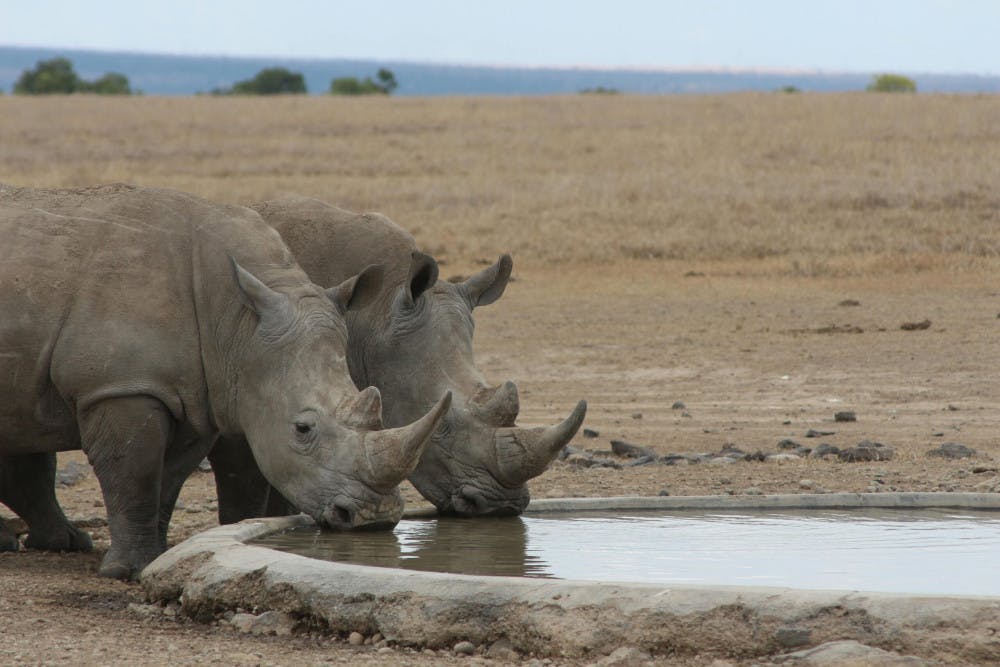A pair of Rhinoceros drinking water in a pond | Photos by Juan Riofrio | Pexels.com
The biodiversity of our planet is under increasing pressure from human activities and climate change. Several species remain critically endangered, and 2025 is projected to see continued threats to some of the most vulnerable animals. Here are a few of the most endangered species and the challenges they face.
African forest elephants
All three elephant species are endangered, but the African forest elephant is critically endangered, according to the World Wildlife Fund.
Native to the dense rainforests of west and central Africa, African forest elephants face threats of poaching and illegal trade, habitat loss, and human conflict. They have slower reproduction rates than other elephant species, which plays a role in their declining population.
African forest elephants are vital to their environment. They act as "ecosystem engineers" by dispersing seeds and creating clearings that allow sunlight to reach the forest floor, promoting plant growth.
Amur leopards

With fewer than 100 remaining, the Amur leopard is one of the rarest big cats in the world. Found in the forests of Russia and China, habitat destruction and illegal wildlife trade threaten its survival, according to the International Fund for Animal Welfare.
Rhinos
Multiple species of Rhinos are critically endangered, including Black rhinos, Javan rhinos, Northern white rhinos (a subspecies of white rhinos), and Sumatran rhinos. Poaching and habitat loss are rhinos’ biggest threat.
According to the International Rhino Foundation, fewer than 60 Javan rhinos currently exist. Northern white rhinos are possibly extinct in the wild, with roughly 2 left. There are only about 30 Sumatran rhinos remaining and there are roughly 3,142 Black rhinos left.
Small gains have been made to conserve Rhino populations including conservation efforts in India and Nepal. However, Rhinos’ survival depends on continued vigilance, international cooperation, and strong enforcement of anti-poaching laws to protect these magnificent creatures.
Orangutans (Bornean orangutan)
All three species of orangutan—the Sumatran orangutan, the Bornean orangutan, and the Tapanuli orangutan—are critically endangered.
However, Bornean orangutan populations have decreased more than 50% and their habitat has been reduced at least 55%, according to the World Wildlife Fund. They face severe threats from deforestation, illegal wildlife trade, and habitat fragmentation.
The species is estimated to number around 55,000 individuals in the wild, though numbers are declining rapidly. Bornean orangutans play a crucial role as seed dispersers, helping maintain the health of their forest ecosystems.
Gorillas
The Cross River gorilla is the most endangered subspecies of gorilla and one of the world's most at-risk primates. Native to the mountainous forests of Nigeria and Cameroon, it faces critical challenges from habitat loss, hunting for bushmeat and disease.
Despite legal protections and growing awareness, limited funding, remote habitats and ongoing human pressures complicate conservation efforts.
Yangtze finless porpoise
The Yangtze finless porpoise, nicknamed the "smiling angel of the Yangtze," is a critically endangered freshwater mammal. Native to China’s Yangtze River, it is among the few remaining freshwater cetaceans and serves as a vital indicator of the river’s ecological health, according to ICUN’s Red List.
The Yangtze finless porpoise faces numerous threats, including dam construction, pollution, overfishing and changing water pollution.
These threats highlight the urgent need for multi-faceted conservation approaches, including habitat restoration, stricter pollution controls and enforcement of anti-poaching and fishing regulations.
Without decisive action, the Yangtze finless porpoise may face the same fate as the now-extinct Yangtze River dolphin.












